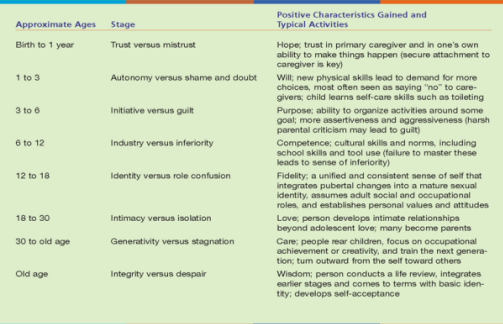- What are we curious about?
- Connecting with Advisor's throughout the country.
- Three Options:
- PA Ag Teacher Directory (See Dr. Ewing's Blog post here: http://psuaee311.blogspot.com/2013/08/access-to-pa-agriculture-teachers.html)
- NAAE Communities of Practice! http://communities.naae.org/welcome
- Guest Speakers in Class! Ask Away!
- What will I record in AET? How does AET work?
- It can really be anything! Maybe start with "hours studying!" We just want you to play with the program and get a feel for it so you can help future students (who will probably be asking the same question at first to themselves!)
- Just start "Cruising" http://theaet.com/
- I would highly recommend attending our first Thursday TeachAg! Technical Update Webinar on AET by John Hines (West Perry) and Neil Fellenbaum (Penn Manor) on Thursday, Sept 5th from 3:30-4:40. Just click on http://meeting.psu.edu/teachag
- How the Theories Work/Connect/Everything! (including who is Bronfenbrenner!)
- Read and comment on this blog post about the theories. Let's keep the conversation going! http://psuaee311.blogspot.com/2013/08/three-theories-of-adolescent-youth.html
- How am I going to create a POA?
- Well, the lessons in session 9 (September 24th) and session 10 (September 26th) will help! Sometimes you just have to "start". Remember!! You are not creating a POA, you are creating a POA implementation plan!
- All these Acronyms!!
- Yes, sometimes it appears we have our own language! Please call me out whenever I use one you are not familiar with! No fear!
- Will we be offered student membership in NAAE and PAAE in AEE 311?
- Yes, go talk to Renee Miller in 207a, rgm13@psu.edu
- Still curious about FFA...all new to me!
- No worries. Just cruise your manual, handbook, and website and bring out questions in class!
- SAE programs and Organizing Them
- Session 16 (October 17th), Session 17 (October 22nd) and Session 18 (October 24th) will be awesome!
- Weekly Wonders
- What are you curious about? Please let us know! They are listed in your assignment handbook. They are on the Angel Lessons Page, and you can work as far as ahead as you wish!
- How people think about what they are going to do through life?
- Us too!
- Foster's Blog
- Hmm, well let's make sure we are all on the same page here:
- Personal Blog: http://exponentiallyimpactful.blogspot.com/
- Advising Blog: http://nittanyowl.blogspot.com/
- Course (AEE 311) Blog: http://psuaee311.blogspot.com/
- Program Blog: http://teachagpsu.blogspot.com/
- Do we need to bring our FFA Manual's to class every trip
- Not required (unless specifically requested), but look at the syllabus and determine if YOU think they might be helpful that day!
- If I will get my moodles done on time
- of course you will! Just start!
- How to recruit members into an FFA program?
- Session 27 on December 3rd!
- What did you learn?
- More about classmates
- How much Ag Ed does Youth Development!
- AET stands for Ag Experience Tracker, which is an online recordbook
- The 7 Factors of Adolescent Development!
- How to pass this class this semester
- Not just pass! Thrive!
- More about Weekly Web Wonders (they can be done in advance!)
- Youth need great leaders RIGHT NOW
- That the class is based/includes information on what is expected of me as an Ag Teacher, specifically when supervising SAEs!
- Fun information on Adolescent Behavior!
- Standards for Ag Teachers are Extensive, but that probably is best!
- A multitude of factors go into a successful FFA chapter
- There are common threads we can connect to Ag Science Classes and organizations like 4H and FFA
- I can log on AET and play!!! Woo hoo!!
- Challenges of Youth Development
- What to Expect!
- What do you want to learn more about?
- AET!!
- Just start "Cruising" http://theaet.com/
- I would highly recommend attending our first Thursday TeachAg! Technical Update Webinar on AET by John Hines (West Perry) and Neil Fellenbaum (Penn Manor) on Thursday, Sept 5th from 3:30-4:40. Just click on http://meeting.psu.edu/teachag
- Moodle Modules!
- The Theories!
- The Acronyms
- See: http://psuaee311.blogspot.com/2013/08/what-does-our-profession-expect-of-us.html
- and http://psuaee311.blogspot.com/2013/08/what-is-total-agricultural-education.html
- Enhancing the family context of students with dysfunctional families
- Here is a great resource website: http://www.preparerespondrecover.com/childrensneeds/strategies.html
- Requirements to Teach
- This is covered in depth in AEE 100. If you are not in AEE 100, schedule a time with Dr. Ewing or Dr. Foster to discuss or visit: http://aese.psu.edu/students/teaching-certification
- More about SAE & POA
- The Future class sessions will be awesome
- How to conduct and engage my classroom!
- See AEE 412, Senior Fall :)
- FFA in general
- review handbook and manual provided (as well as required reading for class)
- Check out https://www.ffa.org in the meantime
- Where do I get my renewal membership form for PAAE?
- See Renee Miller, rgm13@psu.edu, 207a








